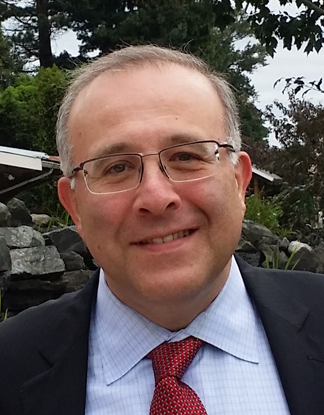
FAA’s Patrick Safarian
Latest News
March 7, 2018
 Patrick Safarian, Fatigue and Damage Tolerance Senior Technical Specialist for the FAA, discusses balancing safety and industry trends (image courtesy of Patrick Safarian).
Patrick Safarian, Fatigue and Damage Tolerance Senior Technical Specialist for the FAA, discusses balancing safety and industry trends (image courtesy of Patrick Safarian).It generally takes five years to certify a brand new part, but it can take as long as ten to 15 years if it involves unproven, composite materials, reveals Dr. Patrick Safarian, Fatigue and Damage Tolerance Senior Technical Specialist for the FAA.
The rigorous testing and validation may be at odds with some manufacturers’ desires to bring new designs to the market as fast as possible, but there’s a reason to be methodical.
“Once we certify something, whether it’s a component or an airplane, it’s very difficult for us to decertify it,” says Safarian.
As a regulatory body, FAA is responsible for certifying airlines, aircraft, airmen, and even airports. But there are some misconceptions about how certification works, specifically as it relates to the analysis tools. Safarian plans to shed some light on it in his upcoming keynote talk at CAASE, cohosted by NAFEMS and DE.
We Certify Parts, Not Tools
If the FAA’s stance toward new technologies like composites and digital simulation seems conservative, it’s because the organization has to prioritize safety over speed and industry trends.
“We tend to be skeptical. We sometimes lag behind the industry in embracing new technologies,” admits Safarian. “For us to embrace something, it has to be tried and true.”
Safarian also recognizes that digital simulation and analysis tools are the workhorses of the aerospace industry, and they are indispensable in the design validation process.
“The regulations are written for parts, not tools. So we don’t certify software; we don’t certify the analytical tools,” clarifies Safarian. “We certify parts either by tests, or by analysis supported by tests.”
For this reason, Safarian doesn’t usually have an easy answer for those who ask, “Is such and such software an acceptable tool for certification?”
Critical and Noncritical Parts
The usual negotiations between FAA and manufacturers revolve around time and cost, according to Safarian. Companies often look at ways to keep the cost down. To increase safety, regulators like FAA prefer to see robust tests and analysis, both of which are costly.
In Safarian’s view, if a company wants to make a component that’s critical to people’s safety and survival but doesn’t want to incur the cost necessary to validate it, “They may be in the wrong business.”
FAA has to be reasonable with its requests too. Safarian doesn’t want his organization’s work to singlehandedly cripple the industry’s momentum and innovation. This is why non-critical parts (like the partition that separates first-class cabin from economy seats) take less time to certify than those that are operation-critical (like a new landing gear).
“If the loss of the part wouldn’t bring down the aircraft, it’s not safety critical,” explains Safarian. “But remember, even with such a part, it still has other considerations. It has to be validated to make sure it won’t easily catch fire, for example.”
Design from the Tail
With 3D-printed composite parts, FAA and the manufacturers face new, unforeseen challenges. “Their designs are new. The way they’re manufactured is new. Because of that, manufacturers need to put controls in the process to make sure it can be repeated. In other words, they need to address the variations between the parts before the design is even submitted for certification,” says Safarian.
Many new material introductions tend to occur in the horizontal tail area, Safarian points out. It’s the ideal area of the aircraft to experiment with minimal risk, since the shape is well-defined, and the load cases are well-documented. So if a manufacturer needs to prove a part designed with new materials can withstand the anticipated load cases and environmental effects, the tail offers more opportunities.
Trust But Verify
The reliance on digital simulation has cut down design cycles and production times, but Safarian cautions that simulation is no substitute for good engineering. It’s fine to use simulation to validate your design ideas, but it’s risky to delegate the thinking to the simulation software.
“Many of the younger engineers are conditioned to trust what the computer says—they just trust it without validation,” observes Safarian. “But it’s just like baking a cake. You use a recipe, you bake it, and it comes out. Now, you might want to taste it.”
For more on Dr. Safarian’s talk, go to https://www.nafems.org/2018/americas/keynotes/safarian/
Subscribe to our FREE magazine, FREE email newsletters or both!
Latest News
About the Author
Kenneth Wong is Digital Engineering’s resident blogger and senior editor. Email him at [email protected] or share your thoughts on this article at digitaleng.news/facebook.
Follow DE





